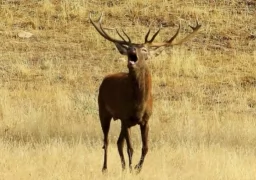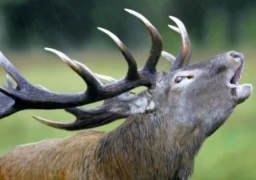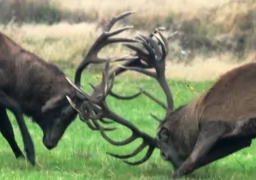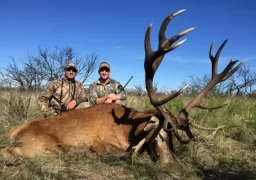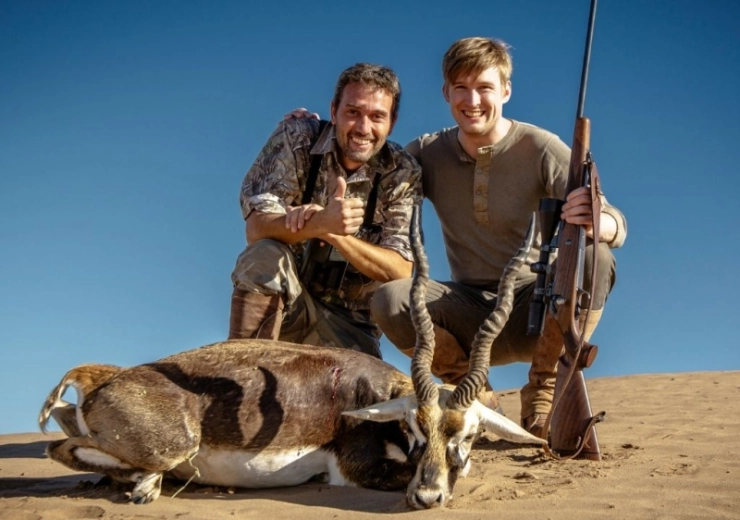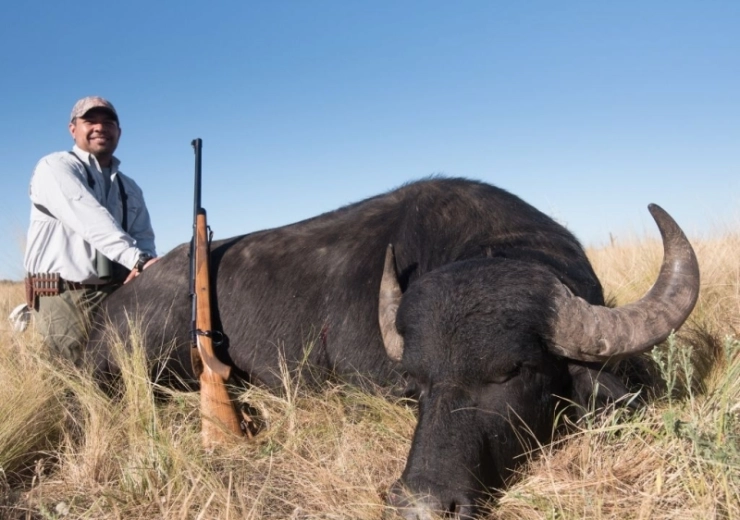NEWS & REPORTS
Evolution of maximum attractiveness
March has begun, and the summer begins to give way to autumn, the Argentinian fields takes an unusual life to shudder with a deep and incomparable sound: the roar of the red deer. This the call of love nature itself, announces that the maximum hunting species of our country is preparing to form its harem and fight against an opponent who intends to dispute the females. Only those privileged mortals who have witnessed this event can value it in its total magnitude since it is almost impossible to transmit the experience with words. Yes, sir, the roar has begun!
But what is the roar itself? Why is it produced?
Its name is a consequence of the sound emitted by the red deer when it comes into heat -the roar- with the ends already described. The roar of the deer is a kind of hoarse bellow, far removed from what is tuned for the human ear, but imperious and convener for the females. It is essential for the natural laws of selection to be complied with and for the species to be preserved. The cervids come into heat once a year, at the end of the summer, so that - due to the gestation period of the females - the young are born at the beginning of spring.
The process in the male
To interpret the complete cycle, let's focus on the male. He flips his antlers every year between the months of September and October. After that, their hormones begin to work on the creation of new antlers. In this race of nature, the antlers grow soft and with a spectacular speed, since in less than three months they are finished and with their final dimension. In this stage, they are covered with a layer of skin with a lot of short hairs and abundant sebaceous glands, called plush or velvet.
Here the "guampas" (horns) have reached their hormonal apogee, and are linked to the skull communicated by blood vessels that give life. After that, these vessels close and begin to ossify and harden. In mid-February the deer is with his antlers completely finished, but still with velvet. There the male begins to clean his antlers against the plants, marking the territory that will be his "bramadero" or mating territory. By the middle of March, with its antlers finished, it is ready for the roar that begins when the days become shorter. Nature makes females detect those light changes and come into heat, releasing hormones that the male sniffs.
After this time, the antlers lose strength in their union due to lack of blood supply, until they fall and start a new cycle. In short: we see that the antlers have different stages and that each one of them fulfills a certain purpose. When ossified and the animal peels the velvet against trunks and branches, it leaves its hormones in the territory to attract its harem. When it is finished, it is used to confront other deer in fights for the control of the territory or its females. It is during this period that the attitude of the deer is really spectacular, walking with its head raised and its defiant posture. It is in continuous movement, with an impetus that leads it to move without ceasing, attacking any marauder who dares to approach their territory.
The defense of females and males is mutual since they fight each other sometimes interlacing their antlers to the point of not being able to separate. In these cases, the combat can end with the death of the two copies. On the other hand, the so-called female watchman - the oldest one - protects the group until the moment of mating that assures them the perpetuity of the species. In case of sensing a nearby danger, she emits a loud bark that warns the whole group.
Each male bellows in a very particular way and they differ from each other. There is a belief that the louder and louder the roar is, the older the deer is, but in fact ... many times in the Pampa mountain you hear a young animal roar like that. Approximately 40 days after the start of the roar, the red deer returns to its solitary existence in the Pampean caldenal. And a new cycle begins.
Evolution of maximum attractiveness
The greatest attraction of this majestic animal is its horns. And like most deer, males are the only ones that have it.
The first antler develops from the year or year and a half of age, being generally two varas without ramifying, this is the reason why this category is known like varetos. Some specimens with great potential may have ramifications already in their first antlers.
As the stag's age advances, its antlers show a greater thickness and development, but both characteristics are affected by several factors, such as genetic quality and feeding.
The growth of the horns is not constant, it stabilizes around eight or nine years, and then - starting at eleven or twelve years - begin the regression.

